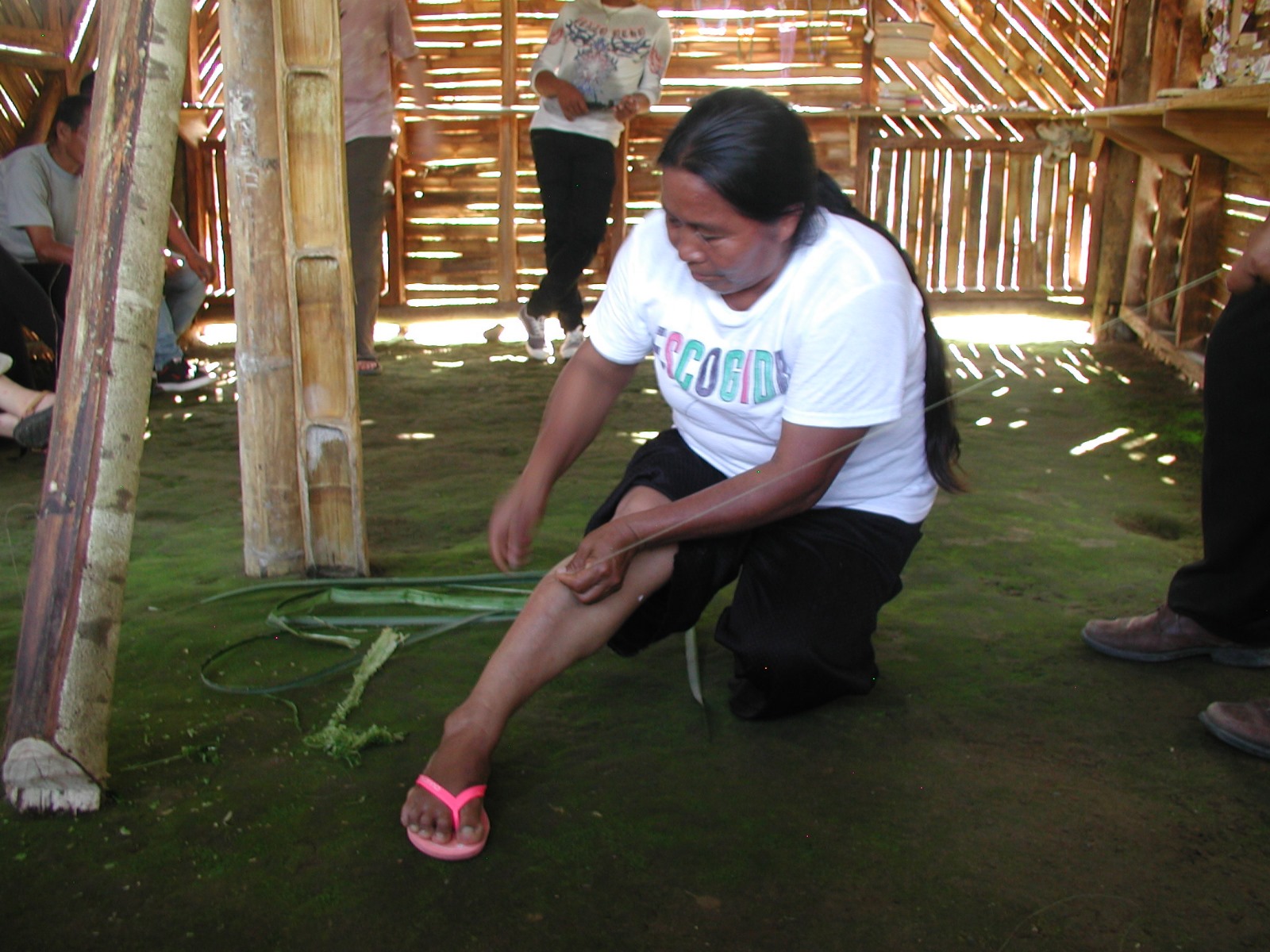
Shigra 1.0
So something I have been noticing here is that people in Mushullakta tend to move around a lot within the community, usually to go to and from work. The thing is, though, the majority of people here are dedicated to their fincas (which is like their farm), but located within the perimeter of the rainforest. So technically, it’s like a horticultural farm with local and domesticated plants on which they rely on for sustenance.
Anyway, this is not only cool, but relevant to this journal because since the community members need to travel far to go to and from the forest to work, they need something to carry their equipment and food they harvest. However, where we would typically use a backpack or back of something, here they use what is called a “Shigra”. I can best describe a shigra as a long-ish knitted shoulder bag that is lightweight but flexible. Since it is knitted, it has a flexible structure that allows it to hold a lot in terms of volume. It is also traditionally made from natural fibers extracted from a plant called “Pita”, which resembles the Yucca plant used by indigenous people of North America, which makes it a relatively lightweight material. Both plants contain strong, flexible fibers that are great for making string to use in other crafts. All this to say that the shigra is strong, flexible and convenient tn when it comes to carrying stuff long distances on a daily basis.
As a college student, this caught my attention for two reasons. Firstly, there was a practical reason, as I also tend to travel by foot a lot while having to carry heavy things over my back (aka, my backpack full of textbooks). Secondly, shigras caught my eye due to the many varieties there are in terms of color, every shigra is customized by its user and has a display of unique colors. Come to find out, shigras are super cool and diverse because they are usually dyed with natural dyes made from plants people have access to in the forest, so every dye is homemade and different!
Overall, let me just say that I am obsessed with the shigras here in Mushullakta, and I really want one. So I did the only rational thing and asked my host mom if she knew how to make them, and if so, if she could teach me how to make one. For context, my host mom is one of the sweetest people I have ever met, and she’s also really funny. So when I asked her for help in making a shigra, she was super excited, and actually glad because she told me she had a lot of pita fiber she had been procrastinating on working on. Basically, my shigra making mission also because a win-win scenario, my mom would teach me how to make a shigra, and I would help her prep the pita fibers into the strings that she could later use on other crafts.
The conversation concluded with us both agreeing to work together on the shigra every weekday before lunch, since making the strings and then knitting the shigra is a time-consuming process. So let’s just say this will be a two part blog where I will document my shigra journey and hopefully display a complete shigra. Keep up to see the final product ;)
For now, I will attach a picture of my shigra that has just been started, and a picture from a demonstration we had where we were taught how the pita string is made from the fiber. Hope you enjoy!

